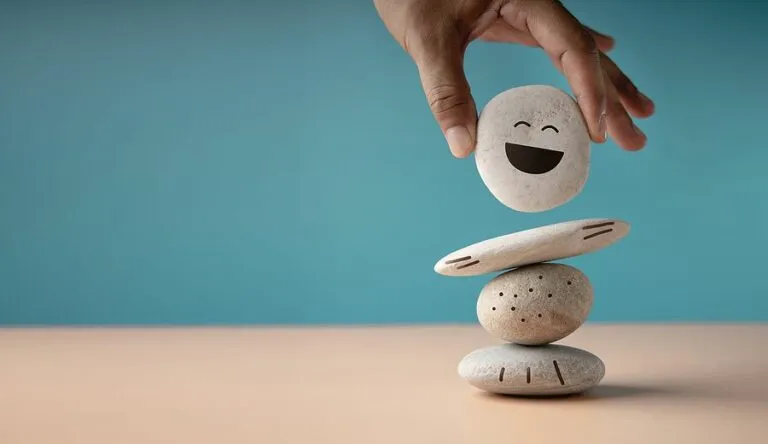$10,000 Experiment Uncovers What Makes Us Happiest: The Science of Happiness
In the quest for happiness, humans have long searched for the formula that leads to lasting joy. For centuries, philosophers, scientists, and self-help experts have proposed various theories about what constitutes a fulfilling life. The pursuit of happiness is often considered the ultimate goal, but what if there was a way to scientifically determine what truly makes us happy?
Enter a groundbreaking experiment that promised to uncover the key factors behind human happiness by offering a $10,000 prize to those who could prove their formula for happiness. This experiment, conducted by renowned psychologists and researchers, aimed to explore the components that contribute to happiness, the difference between short-term pleasure and long-term fulfillment, and how we can better understand the factors that influence our overall well-being.
In this article, we delve into the fascinating findings from this $10,000 happiness experiment, discussing the science of happiness, the lessons learned from the experiment, and the practical takeaways that can help us all live happier lives.
The Concept of Happiness: A Multi-Faceted Puzzle
Before diving into the details of the experiment, it is important to understand the complexity of happiness. The notion of happiness is often perceived as a fleeting, subjective experience, defined by moments of joy, pleasure, and satisfaction. However, psychologists have long argued that happiness is more nuanced than mere enjoyment or pleasure.
In scientific terms, happiness is often broken down into two key dimensions:
- Hedonic Happiness: This type of happiness is related to pleasure and enjoyment. It refers to the momentary feelings of joy, satisfaction, or euphoria that come from sensory experiences, achievements, or pleasurable activities such as eating delicious food, receiving praise, or indulging in a favorite hobby.
- Eudaimonic Happiness: Eudaimonic happiness, on the other hand, refers to a deeper, more enduring sense of fulfillment and well-being that comes from living a life aligned with one’s values, purpose, and personal growth. This type of happiness is associated with meaning, self-realization, and contributing to others or society in a meaningful way.
While hedonic happiness can be easily achieved through external rewards and indulgence, eudaimonic happiness is often harder to attain, as it requires introspection, long-term commitment, and a sense of purpose.
Understanding this distinction is crucial to interpreting the results of the $10,000 experiment, as it suggests that the pursuit of happiness is not a simple or one-dimensional pursuit.
The Experiment: A Scientific Approach to Uncovering Happiness
The $10,000 experiment was designed to test different theories about what leads to happiness, including the impact of material wealth, social relationships, personal accomplishments, and psychological well-being. The experiment’s goal was to uncover the true sources of happiness through a scientifically rigorous, data-driven approach.
Researchers invited a diverse group of participants from various backgrounds, cultures, and life circumstances to participate. They were asked to submit their own hypotheses about what would make them the happiest, and the best, most scientifically valid theory would be awarded the $10,000 prize.
Participants were tasked with designing and implementing a series of personal experiments to test their hypotheses. The study tracked a range of variables, including:
- Spending Habits: Participants were asked to invest in different experiences or material possessions, with the aim of determining whether spending money on things or experiences led to greater happiness.
- Social Connections: Participants were encouraged to engage in different social activities and relationships, and their levels of satisfaction and happiness were measured.
- Time in Nature: The study included the hypothesis that time spent in natural environments could positively impact happiness, and participants were asked to spend time in parks, forests, and open spaces.
- Altruistic Acts: Another hypothesis involved the impact of helping others on long-term happiness, with participants engaging in acts of kindness and charitable giving.
- Mindfulness and Reflection: Participants were encouraged to practice mindfulness, gratitude, and other forms of self-reflection, with the goal of determining whether focusing on the present moment and fostering positive thoughts contributed to increased well-being.
The researchers used a variety of methods to measure happiness, including self-reported questionnaires, physiological indicators such as heart rate and cortisol levels, and behavioral observations. The data was then analyzed to identify patterns and correlations between specific behaviors, experiences, and feelings of happiness.
The Results: Key Findings from the $10,000 Experiment
After months of data collection and analysis, the experiment yielded some surprising and valuable insights into the factors that contribute to happiness. While there was no single formula for happiness, several patterns emerged that could guide individuals in their pursuit of joy and fulfillment.
1. Experiences Over Material Goods
One of the most striking findings from the experiment was the greater happiness that participants derived from spending money on experiences rather than material possessions. While buying new items like clothes, gadgets, or cars may provide short-term pleasure, the joy from experiences—such as travel, social gatherings, and personal achievements—tended to be longer-lasting.
This aligns with previous research that suggests experiences contribute to more lasting happiness because they create cherished memories, foster personal growth, and often involve meaningful social interactions. In contrast, material goods tend to lose their appeal over time as people adapt to their new possessions (a concept known as the “hedonic treadmill”).
2. Social Connections Matter More Than Anything
Another key insight from the experiment was the powerful impact that social relationships have on happiness. Participants who invested time in strengthening their relationships with family, friends, and loved ones consistently reported higher levels of happiness. This was true even when compared to individuals who focused on personal accomplishments or financial success.
The findings are in line with the well-established “social connection hypothesis,” which suggests that human beings are inherently social creatures, and our relationships with others are central to our well-being. Studies have shown that social connections contribute to better mental and physical health, reduce stress, and increase life satisfaction.
3. The Power of Giving
Acts of kindness and altruism were also found to have a significant impact on happiness. Participants who engaged in charitable acts, volunteered, or simply helped others on a regular basis experienced higher levels of fulfillment and joy. The act of giving not only contributed to a sense of purpose but also fostered positive emotions and reinforced social bonds.
This aligns with research on “prosocial behavior,” which suggests that helping others can lead to increased happiness through a phenomenon known as the “helper’s high.” Acts of kindness also promote a sense of social connectedness and reinforce feelings of self-worth.
4. Spending Time in Nature
Participants who spent more time outdoors in natural settings reported feeling more relaxed, rejuvenated, and happier. Nature, it seems, has a unique ability to enhance well-being by reducing stress, improving mood, and providing a sense of peace and tranquility.
Research supports the idea that nature has restorative effects on the mind and body. Time spent in green spaces has been shown to lower blood pressure, improve mental clarity, and boost emotional resilience. Even short walks in nature can have a profound impact on happiness.
5. Mindfulness and Gratitude Practices
Finally, mindfulness and gratitude emerged as key contributors to happiness. Participants who practiced mindfulness, took time to reflect on their positive experiences, and expressed gratitude for the small joys in life were happier overall. These practices helped individuals shift their focus away from stress, anxiety, and negative thoughts, allowing them to appreciate the present moment and cultivate a positive outlook on life.
Mindfulness and gratitude have been shown to improve mental health by reducing symptoms of depression, anxiety, and stress. By focusing on what we have rather than what we lack, we can reframe our mindset and experience greater satisfaction in life.
Practical Takeaways: How to Apply These Findings to Your Life
While the $10,000 experiment focused on scientific analysis, the lessons learned can be applied by anyone looking to boost their happiness. Here are some practical takeaways from the study:
- Invest in Experiences: Spend your money on experiences—such as travel, concerts, or spending time with loved ones—rather than accumulating material possessions.
- Strengthen Social Relationships: Prioritize meaningful relationships and invest time in nurturing connections with family, friends, and your community.
- Practice Altruism: Engage in acts of kindness, volunteer, or donate to causes you care about to boost your happiness and sense of purpose.
- Get Outside: Spend more time in nature, whether through walks, hikes, or simply relaxing in green spaces.
- Cultivate Mindfulness and Gratitude: Practice mindfulness by staying present in the moment and focus on gratitude by acknowledging the positive aspects of your life.
The Path to Lasting Happiness
The $10,000 experiment sheds light on the fact that happiness is not found in material wealth or fleeting pleasures. Rather, true happiness comes from cultivating meaningful experiences, nurturing relationships, giving to others, spending time in nature, and fostering a positive mindset. By applying these insights, we can create a life filled with greater joy, fulfillment, and well-being.
While the pursuit of happiness is a deeply personal journey, science has provided us with valuable tools to navigate it. Through intentional choices, we can all unlock the secret to lasting happiness and live a life that is rich in meaning and connection.























